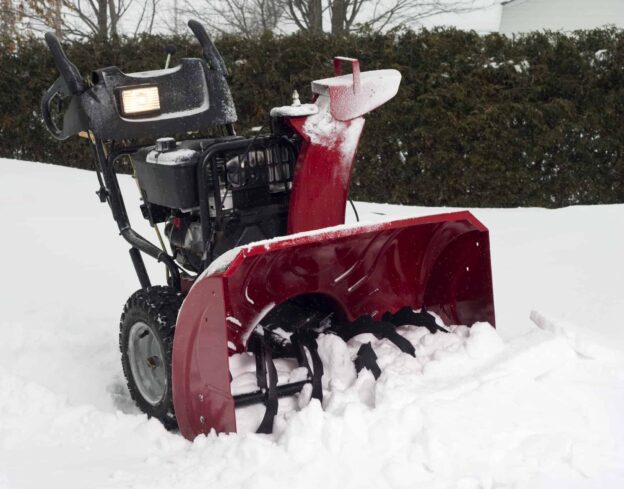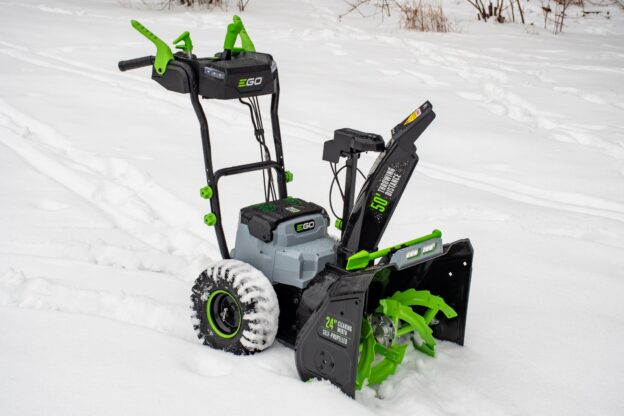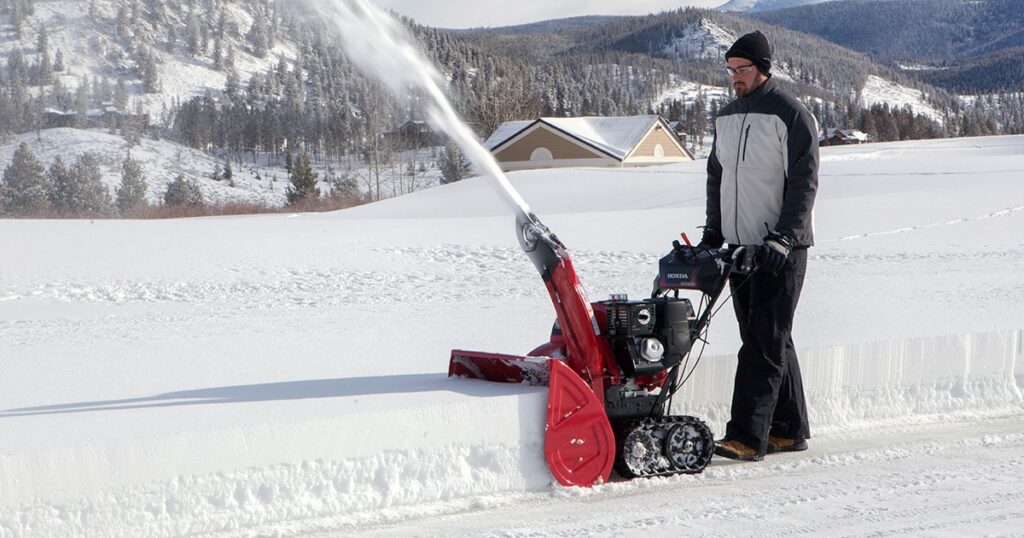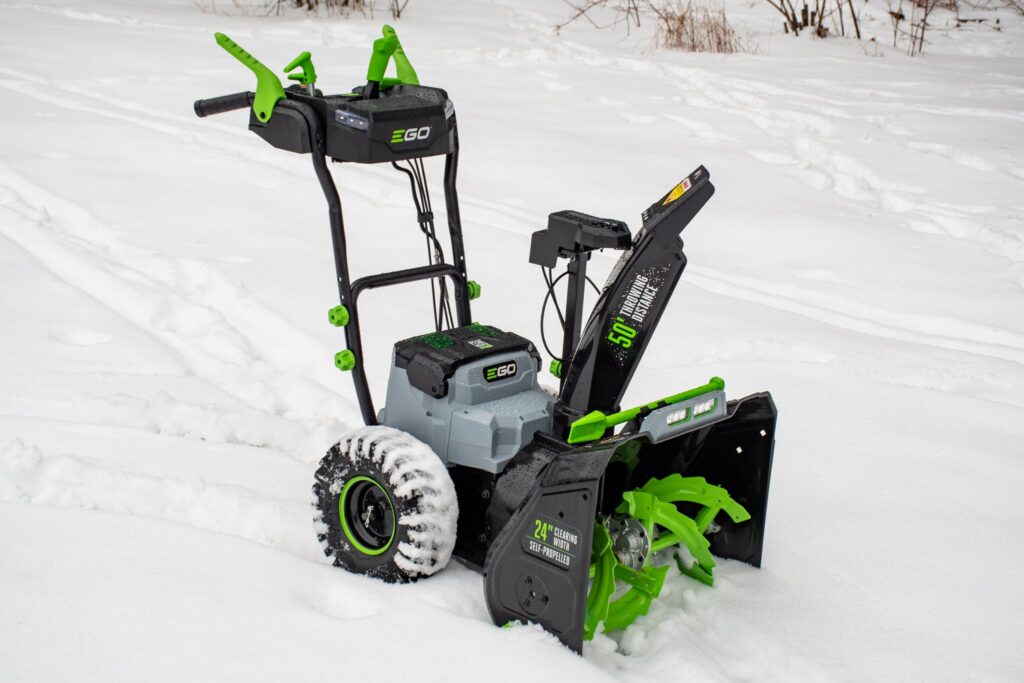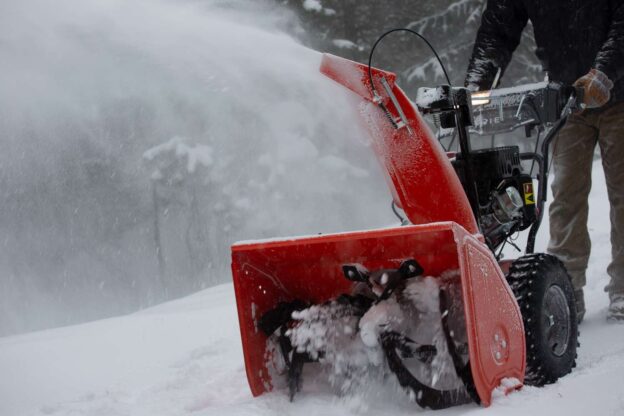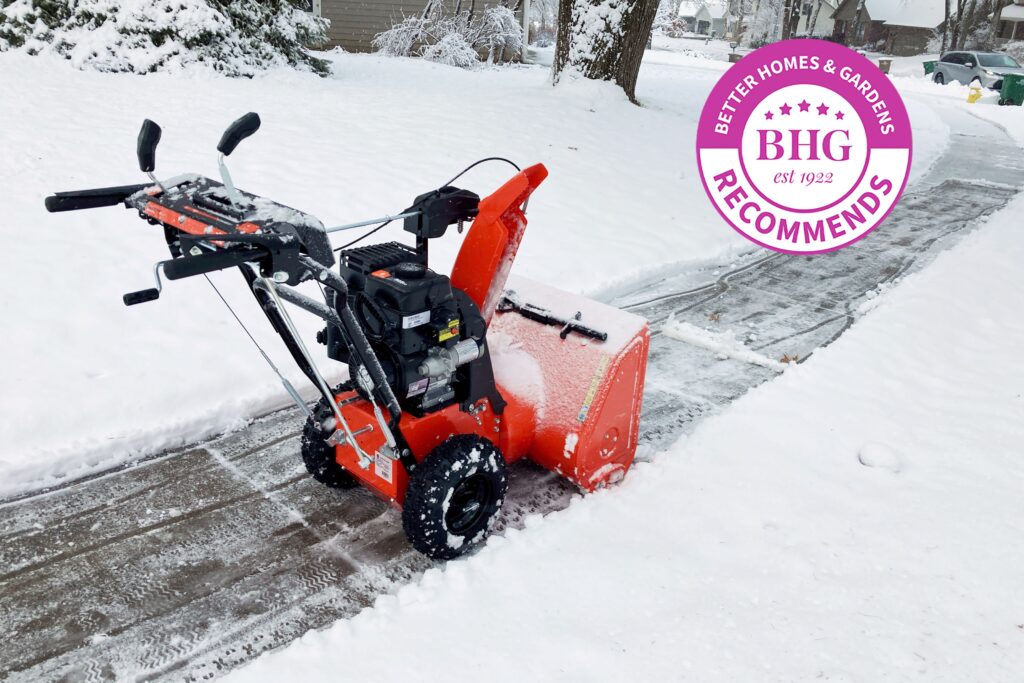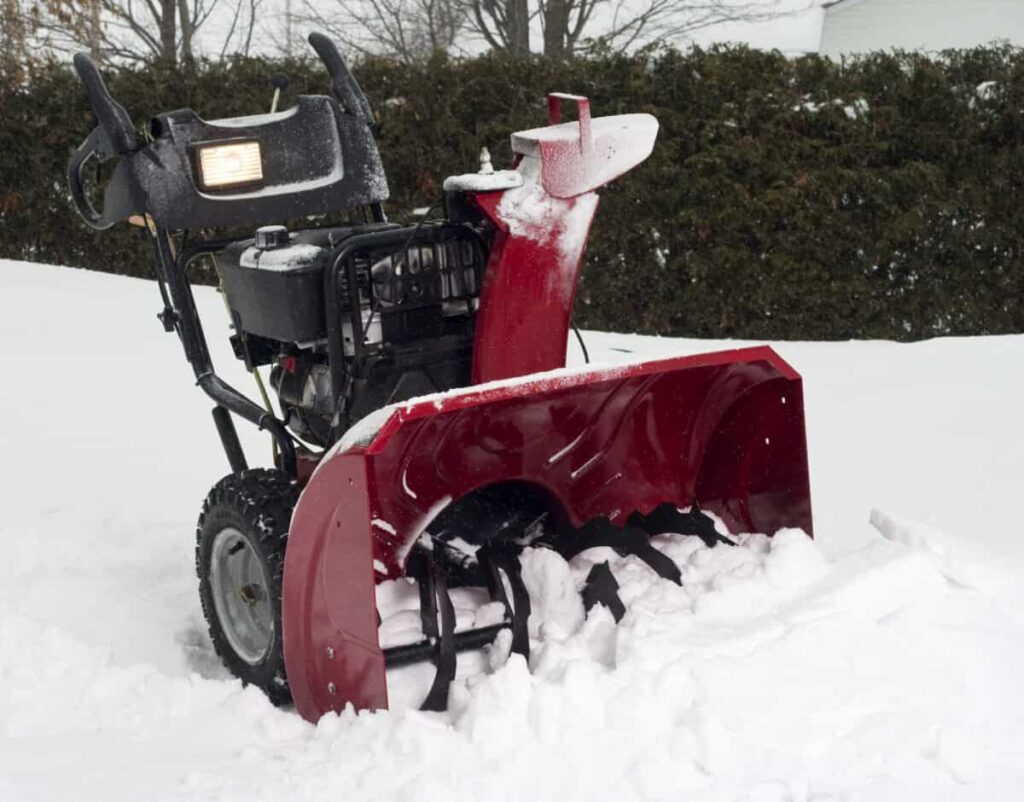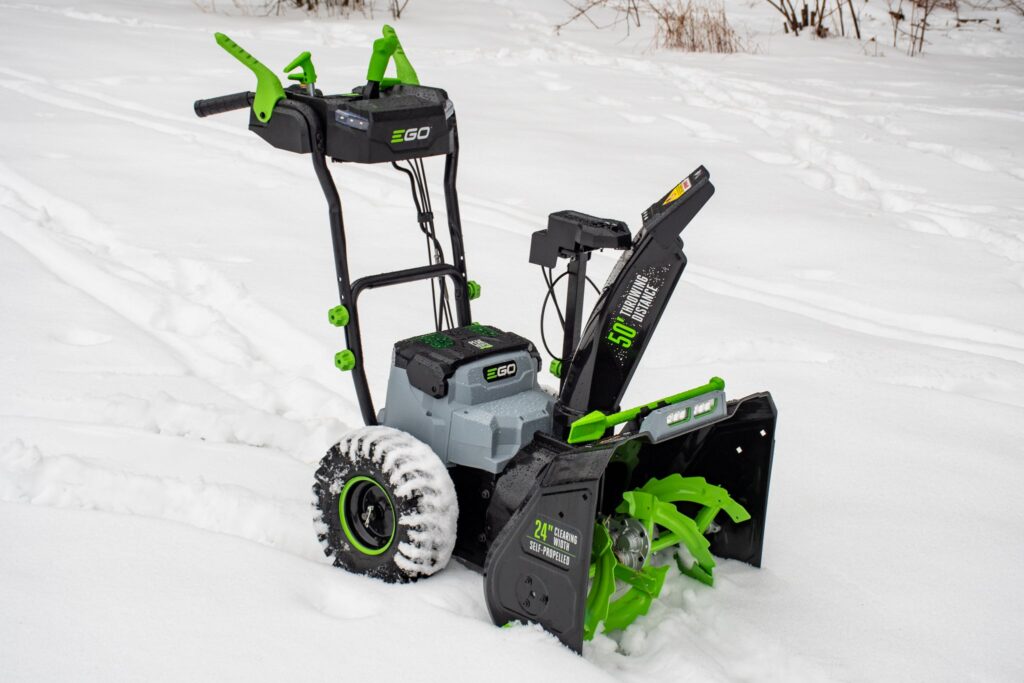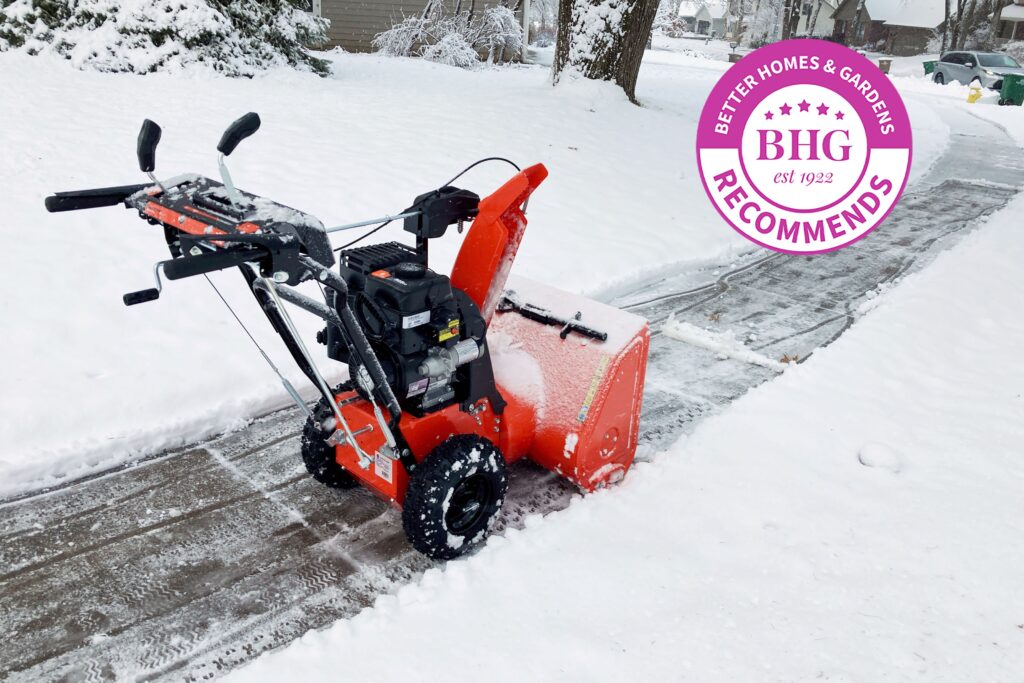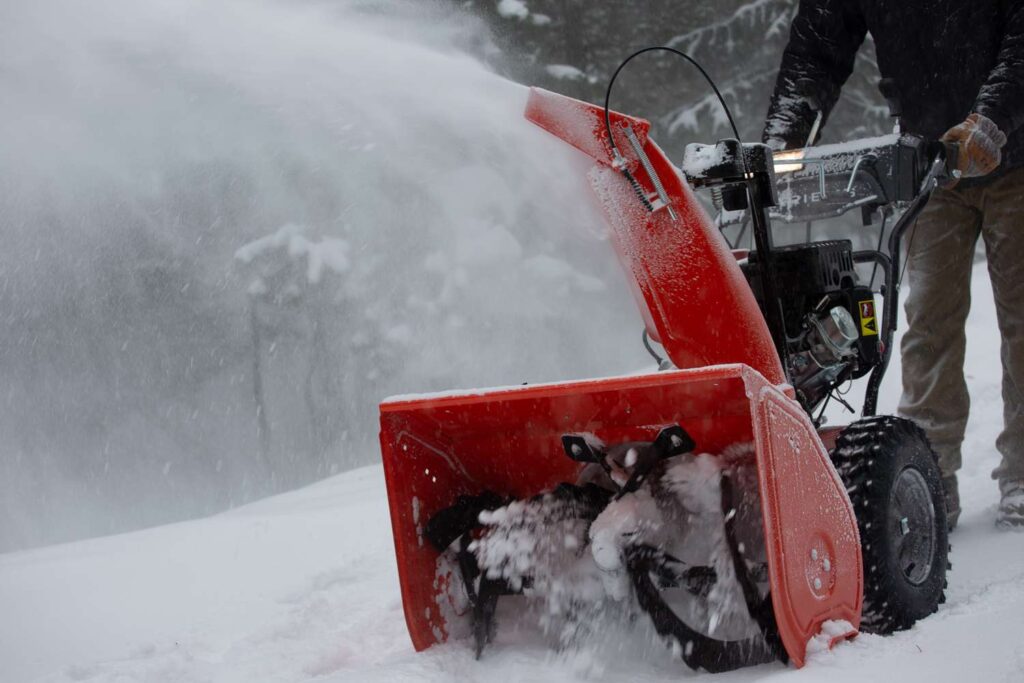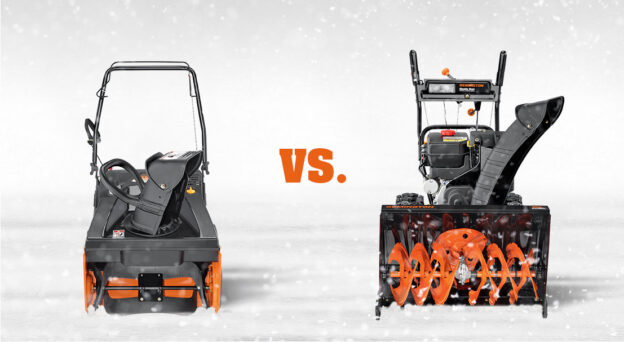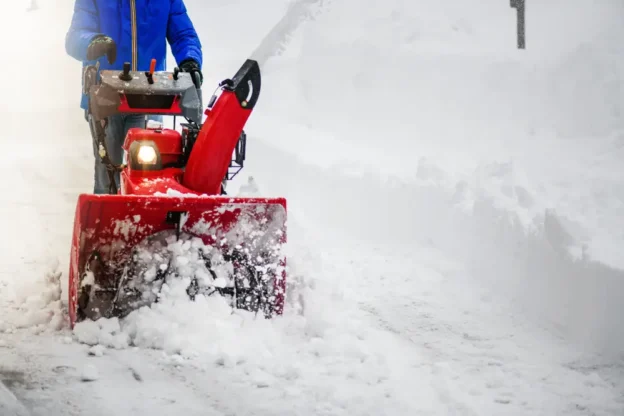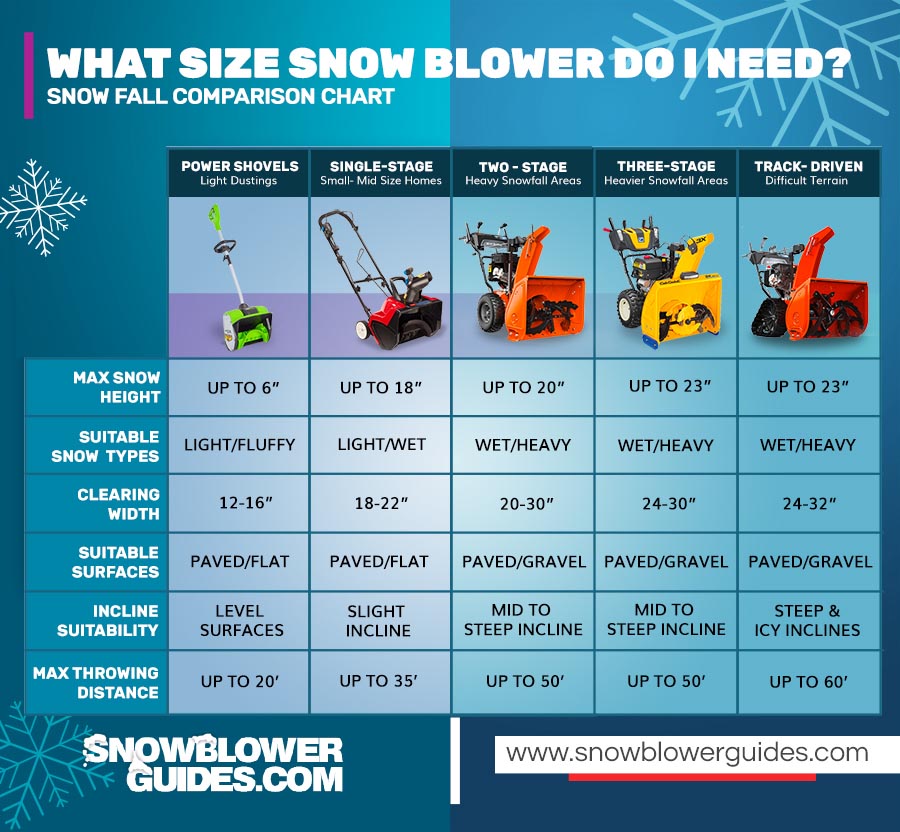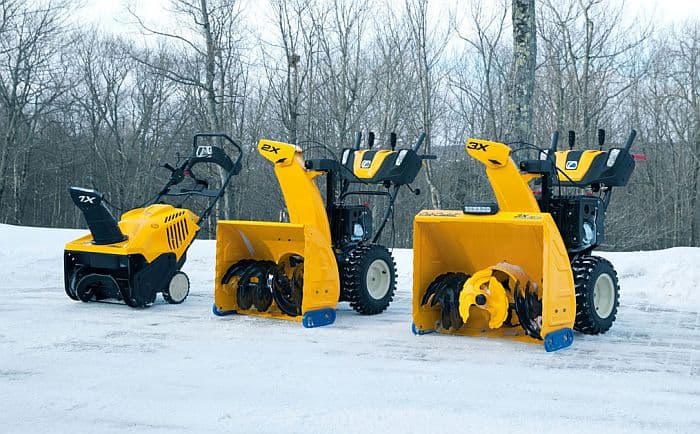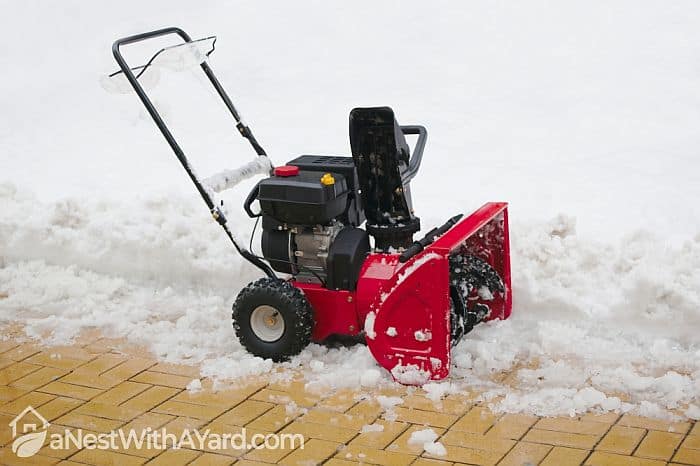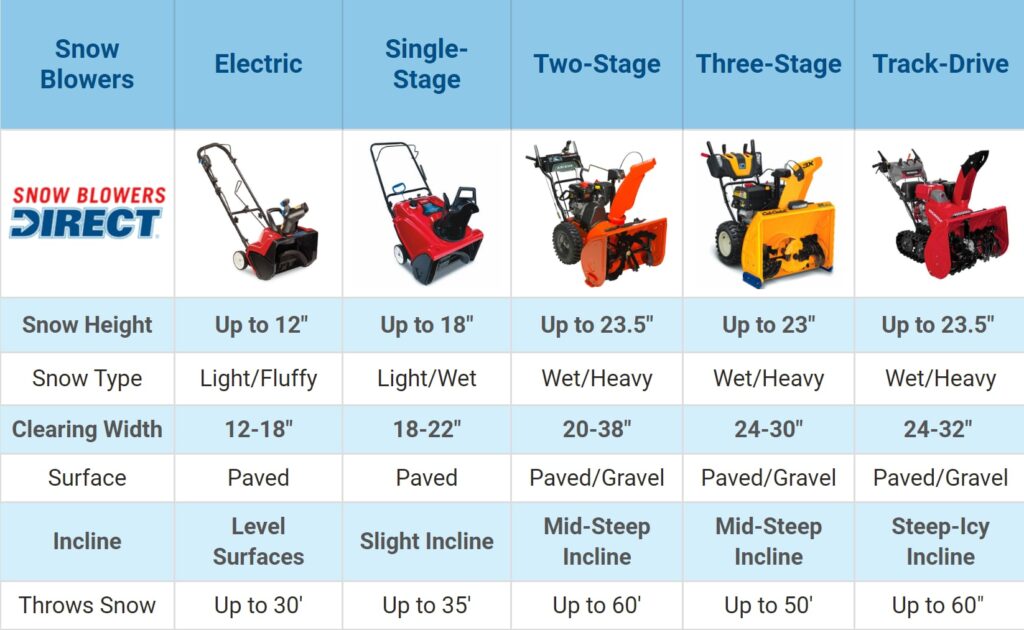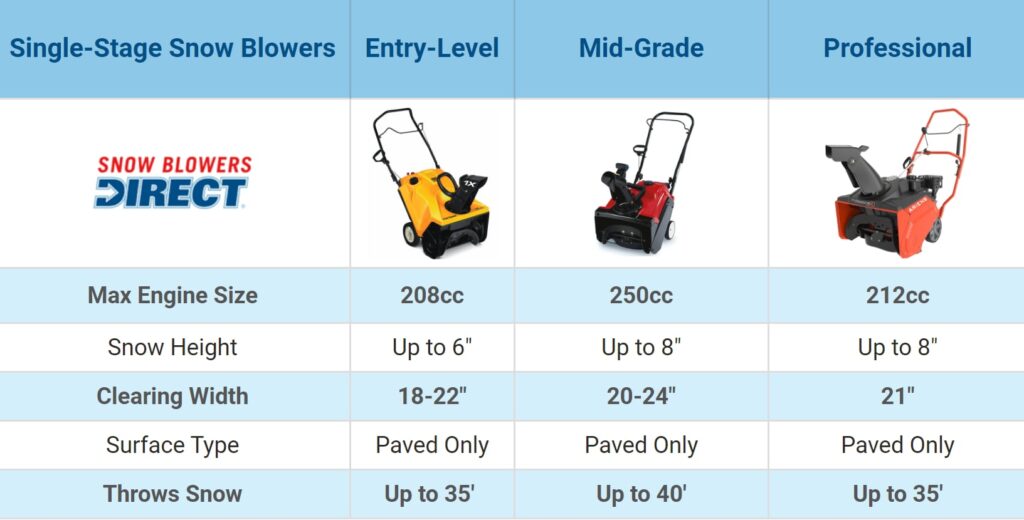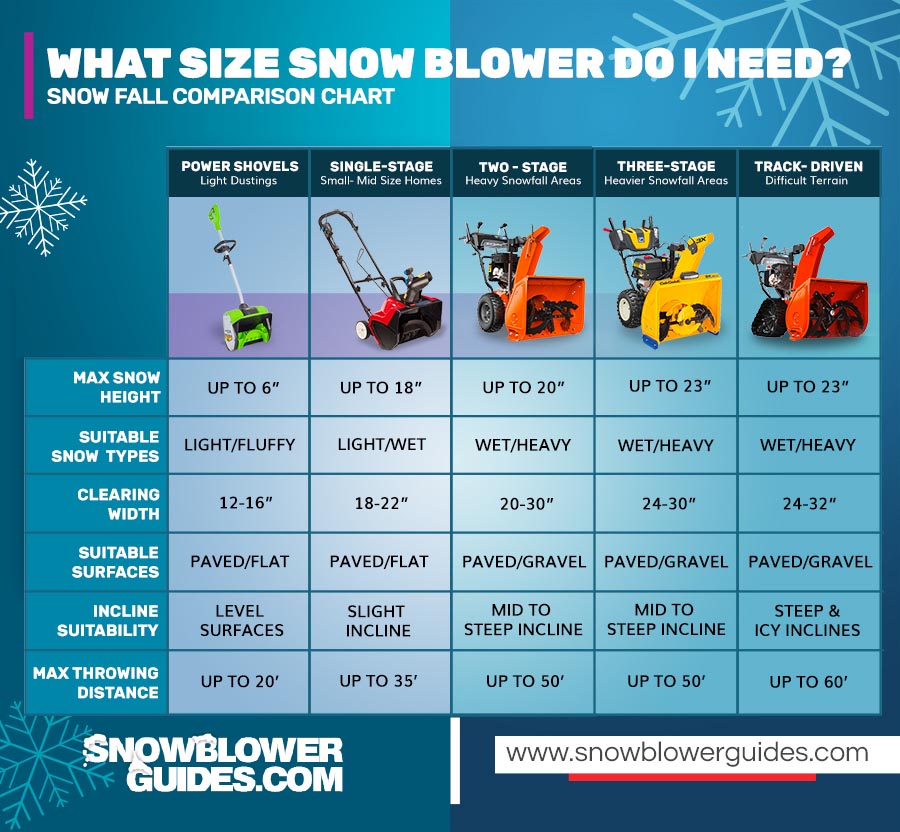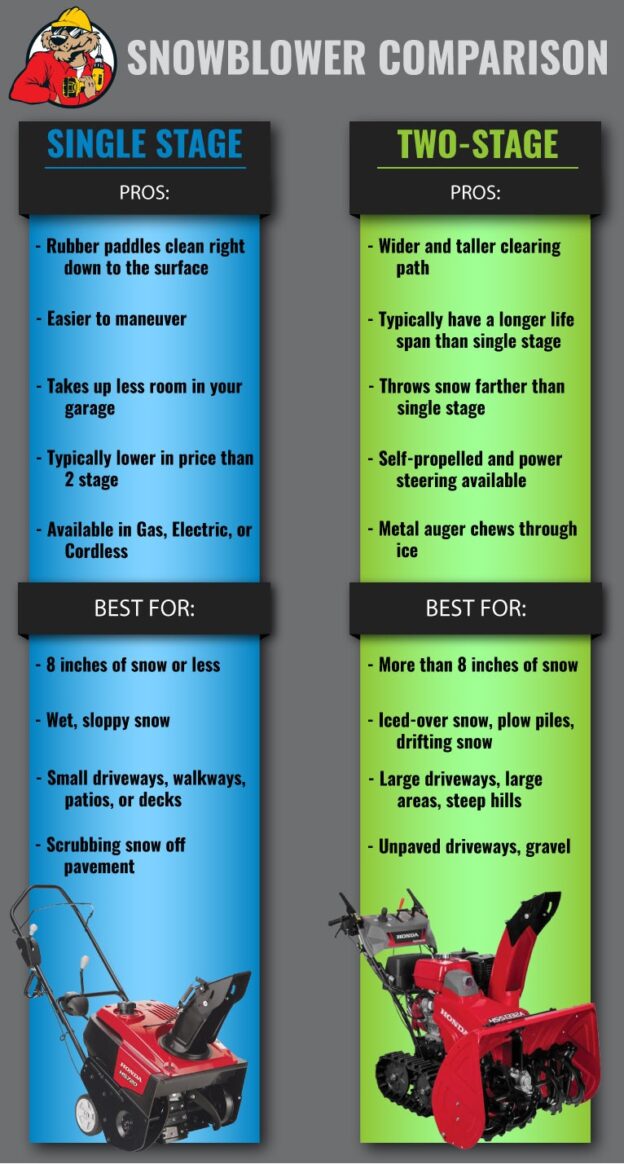Imagine waking up to a winter wonderland, with snowflakes gently falling from the sky and coating the ground in a beautiful white blanket. While it may be a picturesque scene, the reality of shoveling all that snow can quickly dampen your spirits. That’s where the question arises: is it worth it to buy a snow blower? With the convenience and time-saving benefits they offer, investing in a snow blower might just be the solution to make your winter mornings a breeze. From clearing driveways to freeing sidewalks, a snow blower can be your trusty companion when faced with piles of snow. But before making a decision, let’s explore the pros and cons to help you determine if it’s truly worth it.
Factors to Consider in the Decision
Amount of snowfall in your area
The amount of snowfall in your area is an important factor to consider when deciding whether to buy a snow blower. If you live in an area that receives heavy snowfall throughout the winter season, investing in a snow blower can save you a significant amount of time and effort compared to manually shoveling snow.
Frequency of snowfall
In addition to the amount of snowfall, it is essential to consider the frequency of snowfall in your area. If you experience frequent snowstorms or snowfall events, a snow blower can be a valuable tool for efficient snow removal. It can help you keep your driveway, sidewalks, and other areas clear, even if you have to deal with snow multiple times a week.
Type of snow
The type of snow in your area is another factor to consider. Some regions may have wet and heavy snow, while others may have light and powdery snow. The type of snow can affect the performance and effectiveness of different snow blowers. Some models may be more suitable for specific types of snow, so it’s important to choose a snow blower that can handle the type of snow you typically encounter.
Size of the area to be cleared
The size of the area you need to clear is an important consideration when deciding on a snow blower. If you have a small driveway and walkway, a compact snow blower may be sufficient. However, if you have a large property or need to clear a commercial space, a more powerful and larger snow blower may be necessary to get the job done efficiently.
Physical capability
Your physical capability is an important factor to consider. If you have physical limitations or health concerns that make shoveling snow difficult or dangerous, a snow blower can be a practical and safer alternative. It can help reduce the risk of injury and strain on your body, allowing you to clear snow without too much physical exertion.
Cost of hiring a professional
When deciding whether to buy a snow blower, it’s important to consider the cost of hiring a professional snow removal service. While professional services can save you the hassle of snow removal, they can also be quite expensive, especially if you require frequent snow clearing throughout the winter season. Comparing the cost of hiring a professional versus the cost of purchasing a snow blower can help you make a more cost-effective decision.
Storage space availability
consider the availability of storage space for your snow blower. Snow blowers can take up a significant amount of space, especially if you have a larger model. Before purchasing a snow blower, ensure that you have adequate space in your garage or storage area to safely store the equipment when not in use.
Environmental impact
Another factor to consider is the environmental impact of using a snow blower. Gas-powered snow blowers typically produce emissions, contributing to air pollution. Electric snow blowers, on the other hand, produce no direct emissions. By choosing an electric snow blower or implementing other environmentally friendly snow removal practices, you can minimize your impact on the environment.
Additional maintenance tasks
It’s important to consider the additional maintenance tasks that come with owning a snow blower. Regular maintenance, such as oil changes, plug replacements, and cleaning, may be required to keep your snow blower in optimal condition. Factor in the time and effort required for maintenance when deciding whether to invest in a snow blower.
Potential resale value
Lastly, consider the potential resale value of a snow blower. Quality snow blowers can retain their value well over time, especially if properly maintained. If you decide to upgrade to a newer model in the future or if you no longer need a snow blower, being able to sell your used equipment at a reasonable price can help offset the initial investment.
Benefits of Buying a Snow Blower
Convenience and time-saving
One of the major benefits of buying a snow blower is the convenience and time-saving it provides. Instead of spending hours manually shoveling snow, a snow blower can clear large areas in a fraction of the time. This means less time spent outside in freezing temperatures and more time for other activities or relaxation.
Cost-effectiveness in the long run
While the upfront cost of purchasing a snow blower may seem significant, it can actually be a cost-effective solution in the long run. When compared to the cost of hiring a professional snow removal service for multiple winters, a snow blower can pay for itself within a few seasons. It eliminates the need for ongoing expenses associated with professional services.
Increased safety
Using a snow blower can contribute to increased safety during the winter months. Shoveling snow manually can be physically demanding and increase the risk of muscle strain, back injuries, and heart-related issues. With a snow blower, you can reduce the physical strain on your body and minimize the risk of injuries caused by slippery conditions.
Versatility in clearing different surfaces
Snow blowers come in different models that are designed to clear various surfaces, including driveways, sidewalks, and decks. They can effectively clear both flat and inclined surfaces, making them versatile tools for snow removal. Additionally, some snow blowers can be adjusted to accommodate different types of terrain, ensuring efficient snow clearing regardless of the area.
Control over snow removal timing
When you own a snow blower, you have the flexibility and control to remove snow at your own convenience. You no longer have to wait for a professional service or rely on your own physical stamina to clear snow manually. With a snow blower, you can promptly remove snow before it accumulates too much, preventing potential hazards and reducing the time and effort required for removal.
Ability to help others
Having a snow blower can also give you the ability to help others in your community. You can assist your neighbors, friends, or family members by quickly clearing their driveways or walkways, especially in times of heavy snowfall. Being able to lend a helping hand can foster a sense of community and goodwill.
Reduced physical strain
As mentioned earlier, using a snow blower reduces the physical strain commonly experienced when shoveling snow manually. The machine’s motorized operation handles the majority of the work, alleviating the strain on your muscles and joints. This is especially beneficial for individuals with physical limitations or health conditions that make shoveling snow difficult.
Enhanced curb appeal
A well-maintained and clear driveway and walkway can greatly enhance the curb appeal of your home. Snow blowers can efficiently remove snow and leave a clean and tidy surface. This not only improves the overall appearance of your property but also ensures safety for visitors and passersby.
Year-round usefulness
Snow blowers can have year-round usefulness beyond just snow removal. Some models can be used for clearing leaves and debris during autumn, helping keep your property tidy without the hassle of raking. Additionally, they can be utilized for certain gardening tasks, such as blowing away grass clippings or light soil removal.
Resale potential
Quality snow blowers typically retain their value well over time. If you decide to upgrade to a newer model or find that you no longer need a snow blower, you can sell your used equipment at a reasonable price. This potential resale value can help recover a portion of your initial investment, making owning a snow blower a more financially sound decision.

This image is property of www.snowblowersdirect.com.
Types of Snow Blowers
Single-stage snow blowers
Single-stage snow blowers are compact and lightweight machines designed for clearing moderately light and fluffy snow. They feature a fast-spinning auger that scoops up the snow and throws it out through a chute in a single motion. These snow blowers are suitable for smaller areas and relatively lower snowfall regions.
Two-stage snow blowers
Two-stage snow blowers are more powerful and capable of handling heavier snowfall and larger areas. They have an auger that gathers the snow and a separate impeller that propels it out through the chute. Two-stage snow blowers perform well on a variety of surfaces, including gravel driveways, and can tackle wet and compacted snow more effectively than single-stage models.
Three-stage snow blowers
Three-stage snow blowers are the most powerful and heavy-duty type of snow blowers. They feature an additional accelerator, known as an impeller, which breaks down snow and ice before discharging it through the chute. The third stage increases the machine’s throwing capacity, making it highly efficient for clearing large amounts of heavy and deep snow quickly.
Electric snow blowers
Electric snow blowers are powered by electricity and are generally more lightweight and quieter than gas-powered models. They are an excellent option for clearing smaller areas with lighter snowfall. Electric snow blowers require a nearby power outlet or an extension cord to operate, limiting their mobility and range.
Gas-powered snow blowers
Gas-powered snow blowers are equipped with an engine that runs on gasoline. They offer greater power and mobility compared to electric models, making them ideal for larger areas or regions with heavy and wet snow. Gas-powered snow blowers come in various sizes and are suitable for both residential and commercial use.
Cordless/battery-powered snow blowers
Cordless or battery-powered snow blowers offer the convenience of mobility without the need for a power cord or gasoline. They are generally less powerful than gas-powered models, but advancements in battery technology have resulted in improved performance. Cordless snow blowers are best suited for small to medium-sized areas with lighter snowfall.
Track-driven snow blowers
Track-driven snow blowers feature tracks instead of wheels, providing increased traction and maneuverability. They excel in handling steep slopes, uneven terrain, and deep snow. Track-driven snow blowers are commonly used in commercial and heavy-duty applications, making them suitable for large properties or areas prone to heavy snowfalls.
Combination snow blowers
Combination snow blowers are versatile machines that can be used as both snow blowers and snow throwers. They typically feature an adjustable chute that allows the user to switch between throwing the snow to the desired direction or blowing it in a scattered pattern closer to the ground. The versatility of combination snow blowers makes them suitable for various snow conditions and surface types.
Factors to Consider When Choosing a Snow Blower
Power source preference
Your power source preference is an important factor to consider when choosing a snow blower. Gas-powered snow blowers offer greater mobility and power, but they require gasoline and produce emissions. Electric snow blowers are quieter, require less maintenance, and produce no emissions, but they are limited by cord length or battery life.
Snowfall intensity and depth
Consider the intensity and depth of the snowfall in your area. If you experience frequent heavy snowfalls or consistently deal with deep snow accumulation, a more powerful snow blower would be necessary to effectively clear the snow. Lighter snowfalls or regions with shallower snow depth may require a less powerful snow blower.
Area size to be cleared
The size of the area you need to clear is an important consideration when choosing a snow blower. Smaller areas can be efficiently cleared with single-stage or electric snow blowers. For larger areas or commercial spaces, two-stage, three-stage, or gas-powered snow blowers are typically more suitable for the task.
Terrain and surface type
Take into account the terrain and surface type of the areas you intend to clear. Uneven terrain, gravel driveways, or steep slopes may require a snow blower with better traction and stability, such as a track-driven model. For smooth and flat surfaces like asphalt or concrete, most snow blowers should be suitable.
Noise level
If noise level is a concern for you or your neighbors, consider choosing a snow blower with a lower noise output. Electric snow blowers are generally quieter than gas-powered models. Some manufacturers also offer noise-reducing features in their snow blowers, such as insulated housing or sound-dampening materials.
Budget considerations
Establishing a budget is essential when choosing a snow blower. Determine how much you are willing to spend and find a snow blower that fits within your budget while still meeting your snow removal needs. Remember to consider long-term costs, such as maintenance and fuel expenses when comparing different models.
Ease of use and maneuverability
Consider the ease of use and maneuverability of the snow blower. Look for user-friendly features like ergonomic handles, easy chute control, and simple operational controls. Maneuverability is crucial, especially for snow blowers with larger capacities, as it determines how easily you can navigate and maneuver the machine through tight spaces or around obstacles.
Storage space availability
Ensure that you have adequate storage space for your chosen snow blower. Consider the dimensions and whether it can be easily stored in your garage or storage area. Some models offer folding or collapsible handles for more compact storage.
Snow throwing distance
The snow throwing distance of a snow blower is an important factor to consider. If you want the snow to be thrown a significant distance from the clearing area, look for a snow blower with a higher throwing capacity. This is especially important for properties with limited space or if you want to avoid snow piling up near the cleared areas.
Durability and build quality
A snow blower is an investment, and you’ll want a durable and well-built machine that can withstand frequent use and harsh winter conditions. Look for reputable brands with positive customer reviews, as they often offer better build quality and reliability. Consider features such as sturdy construction, heavy-duty materials, and reinforced mechanisms for longevity.

This image is property of cdn.thewirecutter.com.
Additional Features to Consider
Electric start
Snow blowers with electric start capabilities eliminate the need for manual pulling when starting the machine. This feature is especially useful in cold weather when manual pulling can be challenging and time-consuming.
Self-propelled
Self-propelled snow blowers feature wheels or tracks that automatically move the machine forward, reducing the effort required to maneuver the blower. This feature can be particularly helpful when clearing large areas or when dealing with heavy and compacted snow.
Chute control
Chute control allows you to adjust the direction and angle at which the snow is thrown. Look for a snow blower with easy-to-use chute control mechanisms, such as joystick controls or levers, for efficient snow removal and better control over the snow discharge.
Heated handgrips
Heated handgrips provide added comfort and warmth during cold weather. They help prevent your hands from becoming numb and allow for more comfortable operation, especially during long snow removal sessions.
Headlight
A built-in headlight can be a valuable feature, particularly if you need to clear snow during early mornings or late evenings when visibility is limited. The headlight illuminates the clearing path, ensuring safer operation and preventing any potential hazards.
Adjustable handle height
Adjustable handle height is essential for maintaining comfortable and proper body posture while operating the snow blower. Look for models that allow you to customize the handle height to minimize strain on your back and arms.
Tire traction control
Snow blowers with tire traction control offer enhanced stability and traction on slippery surfaces. Traction control features, such as aggressive tread patterns or wheel locks, help prevent slippage, allowing you to navigate through snow-covered areas more effectively.
Auger-assisted drive system
An auger-assisted drive system provides additional power and assists in propelling the snow blower forward. This feature can reduce the effort required for operating the machine, especially in heavy and stubborn snow conditions.
Speed control
Speed control allows you to adjust the operating speed of the snow blower. This feature can be helpful when clearing different areas or when dealing with varying snow conditions. Being able to adjust the speed ensures optimal performance and efficiency.
Joystick control
Some snow blowers offer joystick controls for chute rotation and deflection. This feature allows for precise adjustment of the snow discharge direction, making it easier to maneuver the snow blower and control where the thrown snow lands.
Maintenance and Longevity Considerations
Proper storage and maintenance
Proper storage and regular maintenance are crucial for ensuring the longevity and optimal performance of your snow blower. Follow the manufacturer’s guidelines for storage and maintenance procedures, including storing the snow blower in a dry area and performing routine inspections and cleaning.
Regular oil changes
Gas-powered snow blowers require regular oil changes to keep the engine running smoothly. Refer to the owner’s manual for specific intervals and recommended oil types. Regular oil changes help extend the lifespan of the machine and prevent engine damage.
Spark plug replacement
Periodically check and replace the spark plug according to the manufacturer’s recommendations. Faulty or worn spark plugs can negatively impact the engine’s performance and fuel efficiency.
Belt and auger maintenance
Inspect and adjust the belts and augers regularly. worn-out or damaged belts can affect the snow blower’s performance and may need replacement. Lubricate the augers and all moving parts as recommended to prevent friction and ensure smooth operation.
Cleaning and lubrication
Clean the snow blower thoroughly after each use, removing any debris or snow buildup. Lubricate moving parts as needed to prevent rust and maintain smooth operation. Pay close attention to the chute and impeller area, as snow can accumulate and cause obstructions.
Inspection for wear and tear
Perform regular inspections to identify any signs of wear and tear, such as loose or damaged parts, rust, or cracks. Address any issues promptly to prevent further damage and maintain the snow blower’s reliability and safety.
Proper fuel management
If you own a gas-powered snow blower, practice proper fuel management. Use fresh fuel without any additives and be sure to drain the fuel at the end of the season to prevent fuel deterioration. Avoid using ethanol-blended fuel, as it can lead to engine damage.
Professional servicing options
Consider professional servicing options, especially if you’re unsure about performing maintenance tasks yourself. Many dealerships or repair shops offer snow blower servicing and maintenance packages that can help keep your machine in top condition.
Winterization
Winterization involves preparing your snow blower for storage during the off-season. It typically includes draining any remaining fuel, cleaning the machine thoroughly, and conducting a final inspection. Follow the manufacturer’s instructions for proper winterization procedures.
Expected lifespan
The expected lifespan of a snow blower can vary depending on the brand, model, level of maintenance, and frequency of use. On average, a well-maintained snow blower can last anywhere from 10 to 20 years. Investing in a quality snow blower and keeping up with proper maintenance can help extend its lifespan.
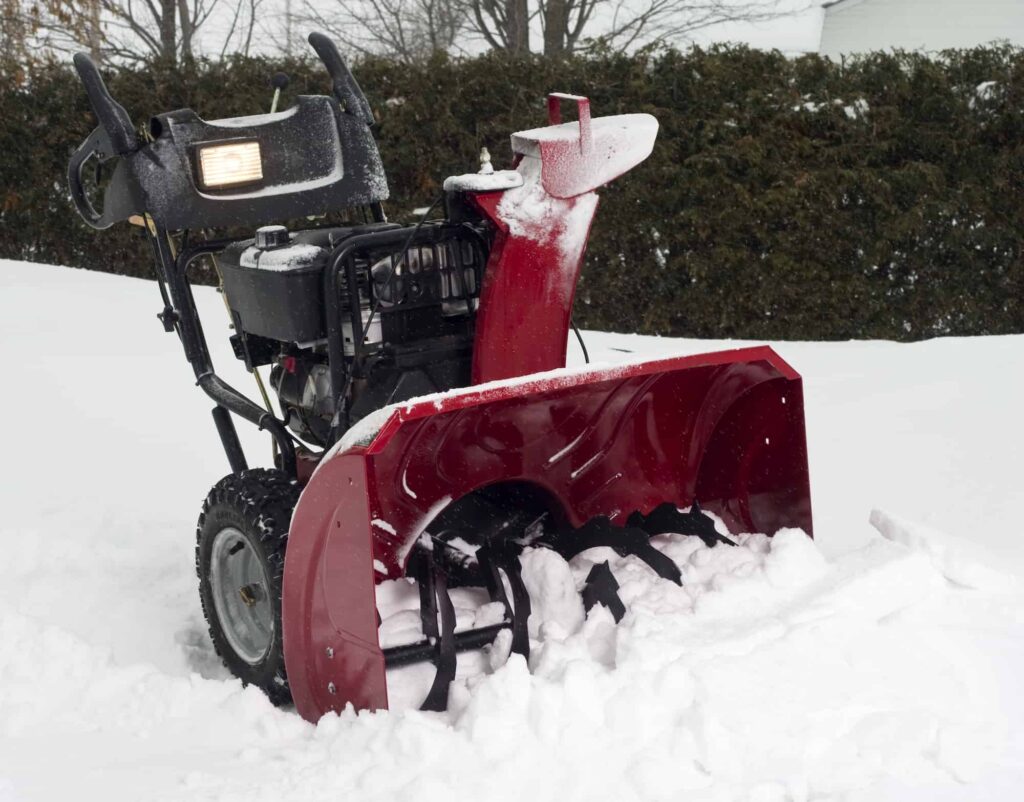
This image is property of singlegirlsdiy.com.
Alternatives to Buying a Snow Blower
Hiring a professional snow removal service
If you prefer not to invest in a snow blower and handle snow removal yourself, hiring a professional snow removal service is an alternative. Professional services have the necessary equipment and expertise to efficiently clear snow from your property. However, it’s important to consider the cost and availability of professional services, especially during peak snow removal seasons.
Using a snow shovel
Using a snow shovel is a traditional and cost-effective way to remove snow. However, it can be physically demanding and time-consuming, particularly for larger areas or heavy snowfall conditions. Shoveling snow manually also increases the risk of injuries, strain, and exhaustion.
Using a snow plow attachment
If you already own a lawn tractor or ATV, consider purchasing a snow plow attachment that can be used to clear snow from your driveway and other areas. Snow plow attachments are typically less expensive than standalone snow blowers, and they can be effective for moderate snow removal. However, they may not be as efficient as dedicated snow blowers in tackling heavier snowfall or deep snow.
Renting a snow blower
If you only need a snow blower for a limited time or occasional use, renting a snow blower may be a viable option. Many hardware stores and equipment rental companies offer snow blower rentals during the winter season. Renting allows you to access the benefits of a snow blower without the long-term commitment or upfront costs.
Seasonal Availability and Pricing
Winter demand and availability
Snow blowers are in high demand during the winter season, particularly in areas with significant snowfall. It’s important to plan ahead and purchase your snow blower before the winter rush begins. By doing so, you’ll have a better selection of models and avoid potential shortages.
Black Friday and Cyber Monday deals
Black Friday and Cyber Monday are popular shopping holidays that often feature significant discounts and deals on various products, including snow blowers. Keep an eye out for sales and promotions during these events, as they can provide an opportunity to save money on your snow blower purchase.
End-of-season sales
As winter comes to an end, many retailers hold end-of-season sales to clear their remaining stock of snow blowers. These sales can offer attractive discounts and allow you to purchase a snow blower at a lower price. However, availability may be limited, so it’s important to act quickly if you find a suitable model.
Search for used snow blowers
Consider purchasing a used snow blower if you’re on a tight budget. Used snow blowers can be found through online marketplaces, classified ads, or local dealerships. Just be sure to thoroughly inspect the machine, inquire about its maintenance history, and test it if possible before finalizing the purchase.
Consider local dealerships and online retailers
When shopping for a snow blower, explore a variety of options, including local dealerships and online retailers. Local dealerships often provide personalized service, expertise, and assistance with maintenance and repairs. Online retailers, on the other hand, offer a wide range of models and competitive pricing. Compare prices and available features from different sources to find the best deal.
Warranty and refund policies
Before making a purchase, review the warranty and refund policies of the manufacturer or retailer. A warranty provides added protection and peace of mind, ensuring that any defects or issues can be addressed without incurring additional costs. Additionally, familiarize yourself with the retailer’s refund policy to understand your options in case the snow blower does not meet your expectations.
Budget-friendly financing options
If the upfront cost of a snow blower is a concern, explore financing options. Some manufacturers or retailers offer financing plans with low or no interest for qualified buyers. Financing allows you to spread the cost over time, making it more manageable and budget-friendly.
Comparing prices and features
Take the time to compare prices and features of different snow blower models. Consider the specific features you need and determine their value to you. By comparing prices and features, you can make an informed decision that maximizes the value and functionality of your snow blower.
Evaluating the overall value
When considering the price of a snow blower, it’s essential to evaluate the overall value it provides. Consider factors such as performance, durability, included features, and warranty coverage. Investing in a quality snow blower that meets your specific needs and offers long-term reliability is often worth the initial cost.
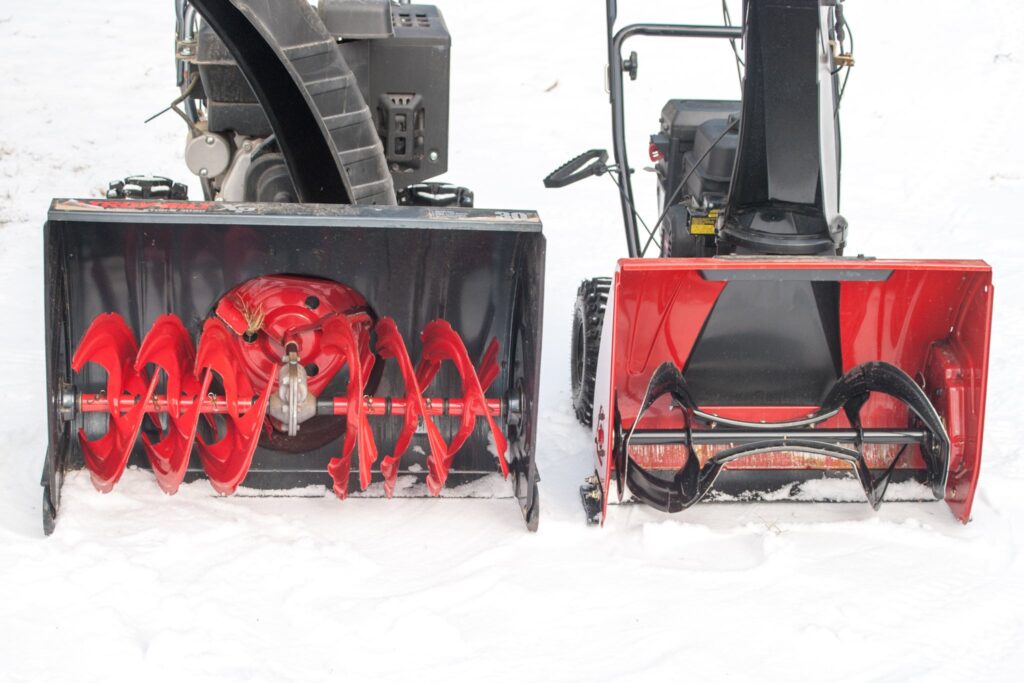
This image is property of cdn.thewirecutter.com.
Environmental Considerations
Eco-friendly snow removal options
If environmental impact is a concern for you, explore eco-friendly snow removal options. These include using manual snow shovels, practicing responsible snow disposal, or choosing alternative snow removal methods that minimize carbon emissions and noise pollution.
Gas-powered snow blowers vs. Electric snow blowers
Gas-powered snow blowers produce emissions, contribute to air pollution, and rely on non-renewable fossil fuels. Electric snow blowers, on the other hand, produce no direct emissions and can be considered more environmentally friendly. When weighing your options, consider the trade-offs between power, mobility, noise, and emission levels.
Noise pollution concerns
Snow blowers, particularly gas-powered ones, can generate considerable noise during operation. If noise pollution is a concern in your neighborhood or for your personal preference, consider electric models or snow blowers with noise-reducing features, such as insulated housing or sound-dampening materials.
Emission levels
Gas-powered snow blowers emit pollutants such as carbon monoxide, nitrogen oxide, and volatile organic compounds. These emissions contribute to air pollution and can have negative health effects. Electric snow blowers produce no direct emissions, resulting in cleaner air and a reduced carbon footprint.
Fuel efficiency
When comparing gas-powered snow blowers, consider their fuel efficiency. Look for models with efficient engines that maximize power output while minimizing fuel consumption. Higher fuel efficiency translates to reduced fuel usage and lower emissions, making it a more environmentally conscious choice.
Responsible snow disposal practices
Proper snow disposal practices are essential for minimizing environmental impact. Avoid piling snow on trees, vegetation, or storm drains, as it can introduce pollutants and contaminants into the environment. Dispose of snow in designated areas or melt it responsibly without risking contamination of local water sources.
Impact on local wildlife
Clearing snow involves altering natural habitats and potentially disturbing local wildlife. Be mindful of the impact your snow removal activities may have on the surrounding ecosystem. Avoid disrupting wildlife habitats, such as nesting areas or food sources, and take precautions to minimize disturbance while clearing snow.
Choosing environmentally friendly features
When selecting a snow blower, consider models with additional environmentally friendly features. Look for snow blowers that have energy-efficient motors, meet low emissions standards, or offer features specifically designed to reduce environmental impact. Choosing environmentally friendly features can help minimize your carbon footprint and contribute to a greener future.
Long-term sustainability
Emphasize long-term sustainability when selecting a snow blower. By choosing a durable and high-quality snow blower, you can reduce the need for premature replacements and contribute to a more sustainable lifestyle. Proper maintenance, responsible use, and an eco-friendly approach to snow removal all play a part in long-term sustainability.
User Reviews and Experiences
Relevant online platforms for user reviews
When researching snow blowers, refer to relevant online platforms that offer user reviews. Websites such as consumer review websites, online retailers, or social media platforms provide valuable insights from other users who have purchased and used the same or similar snow blowers you are considering.
Researching user experiences and recommendations
Read through user experiences and recommendations to gain a broader understanding of the pros and cons of different snow blower models. Pay attention to comments regarding performance, reliability, ease of use, and specific features that align with your needs.
Considering different perspectives
Consider different perspectives when reading user reviews. Individuals may have varying expectations, snow conditions, or levels of experience with snow blowers. Balanced and well-rounded assessments will allow you to weigh the pros and cons more effectively.
Common complaints and concerns
Take note of common complaints and concerns mentioned in user reviews. These can provide insights into potential issues or considerations you may not have otherwise thought of. However, keep in mind that individual experiences can vary, and some complaints may be outliers.
Comparing user satisfaction
Look for patterns in user satisfaction across different snow blower models. Pay attention to snow blowers that consistently receive positive feedback or high ratings. This can indicate reliable performance and customer satisfaction.
Reputation and reliability of brands
Consider the reputation and reliability of the brands you are considering. Look for brands with a track record of producing high-quality snow blowers and providing good customer support. A brand with a strong reputation is more likely to offer reliable products that meet your expectations.
Seeking advice from local experts
If possible, seek advice from local experts or professionals who have firsthand experience with snow blowers in your area. They can provide valuable insights into which models or features are better suited for the specific snow conditions and terrain you encounter.
Determining the right model for your needs
Consider all the information gathered from user reviews and expert opinions to determine the right model for your needs. Take into account factors such as snow conditions, area size, power requirements, and any specific features that are important to you.
Effectiveness in different snow conditions
Review user feedback to assess how different snow blowers perform in various snow conditions. Some snow blowers may excel in light and fluffy snow, while others may handle wet and heavy snow better. Choosing a snow blower that aligns with the typical snow conditions in your area will ensure optimal performance.
Ease of assembly and operation
Consider user feedback regarding the ease of assembly and operation. Look for models that are straightforward to set up and user-friendly, especially if you are unfamiliar with snow blowers. Opting for a model with straightforward controls can save you time and frustration during operation.
In conclusion, considering various factors such as the amount and frequency of snowfall, the size of the area to be cleared, your physical capability, and the potential resale value can help you make an informed decision when deciding whether to invest in a snow blower. The benefits of owning a snow blower, including convenience, time-saving, increased safety, and versatility, make it a valuable tool for efficient snow removal. Choosing the right snow blower involves considering factors such as power source preference, snowfall intensity and depth, area size, terrain, noise level, budget, ease of use, and storage space availability. Additional features like electric start, self-propelled capability, chute control, and adjustable handle height can enhance the usability and comfort of your snow blower. Maintenance and proper storage are vital for ensuring the longevity of your snow blower, including regular oil changes, spark plug replacement, and belt and auger maintenance. Alternatives to buying a snow blower include hiring a professional service, using a snow shovel or snow plow attachment, or renting a snow blower. Consider seasonal availability and pricing, evaluate environmental considerations, and rely on user reviews and experiences to guide your decision-making process. Ultimately, finding the right snow blower for your needs will ensure efficient snow removal and make winter a more manageable season.
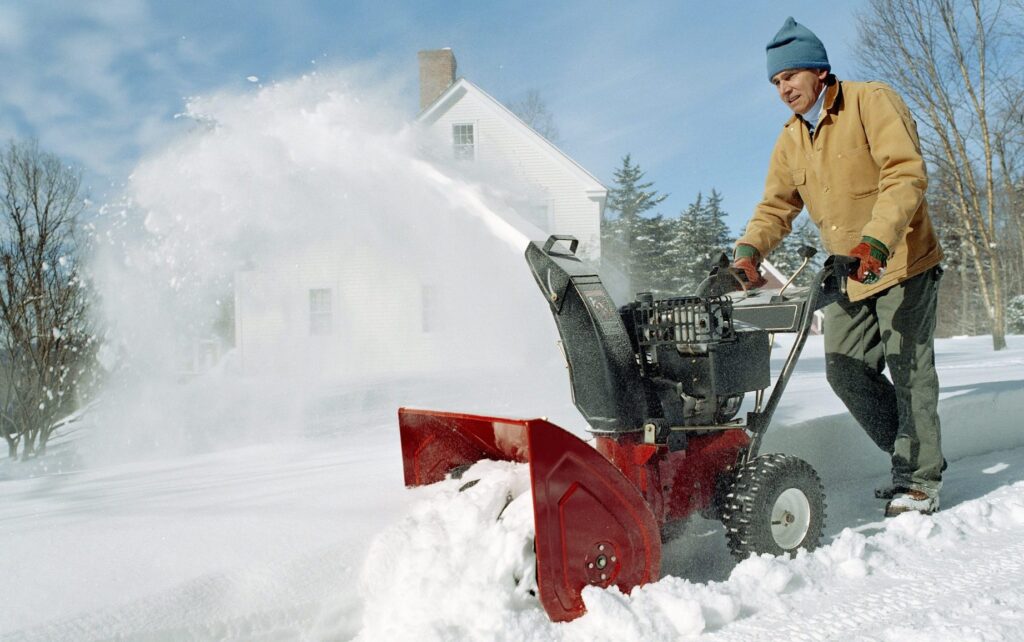
This image is property of cms.accuweather.com.
